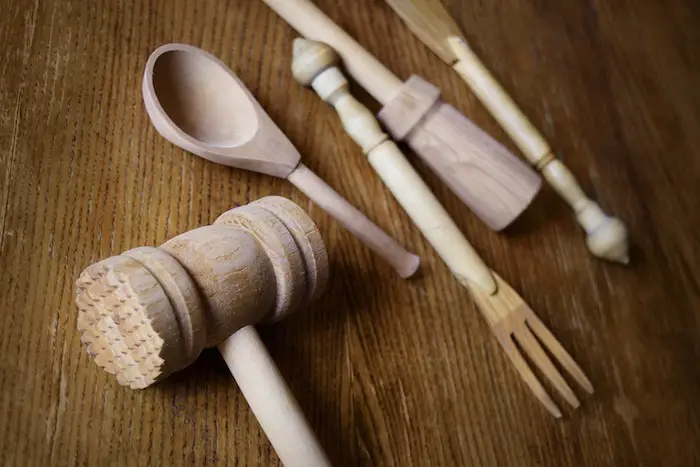It is okay to have a metallic only table at home or in your workplace until it is time to build up your computer and set it up. One of the most frequent concerns is, will the metallic table or surface destroys your personal computer. This question cuts across placing a laptop or a desktop on a metallic surface.
So, can you place a computer on a metal table? Ideally, the answer is no, there are one too many risks involved. To start, by frequently grinding the computer on the metal surface, you will end up scratching its case. Secondly, in case of any chance of an electrical fault and power surges you may be electrocuted especially if the metallic table is not grounded.
Bottom line the cost of using a metallic table is high including always having to worry about possible electrical faults that could end your life or that of your PC. Therefore, since there is a wide array of table surfaces, it is recommended you avoid placing your PC on a metallic table.
Keep reading to find out more about why you should not place your computer on a metal table, how to ground your metallic table, don’ts of placing your computer, how to clean your computer and other computer-related questions.
Why You Should Not Use a Metallic Table for Your PC
One of the greatest risks of using a metallic surface when operating your PC is being electrocuted. However, this topic has been on a heated debate fueled by the fact that most computers are grounded through a three-conductor power cord and receptacle. The grounding minimizes the risk of electrocution.
Moreover, most computers have rubber stands that prevent them from being directly in contact with the surface. This is meant to prevent any case of conducting electricity.
That said thou, the chance of being electrocuted is still very possible. For starters, those rubber stands tend to fall off especially for laptops. So, you can imagine the danger you constantly expose yourself to when using a laptop without a rubber stand and placed on a metallic table.
Secondly, even with a grounded computer, your table has to be grounded as well. Unless you are looking for the state of the art professional metallic tables, most locally available metallic tables are not grounded. Why risk using your computer on them?
Other risks of using a metallic table include skin irritation from prolonged contact with metal and a scratched computer case as mentioned above.
You see, life is fleetingly short. Exposing yourself to electrocution, possible death, and allergies should not be in your bucket list. Therefore, find another workspace table, non-metallic, and go achieve your job goals.
How to Ground your Metallic Table
Although using a metallic table for your computer is risky, sometimes it can be the only option. This is the case when you are not in a financial position to purchase a new table and you have a metallic one. As such, you need to rake precautions before using the table. They include grounding it if it was not grounded in the first place.
To ground your table, cut foursquare pieces of an old rubber tube and fit each square piece on each stand of the table. Alternatively, you can use cardboard instead of the rubber.
The point is to place an insulator between the metallic table and the ground, therefore, making sure an electric circuit is not complete.
Don’ts of Placing your Computer
When choosing where to place your computer, you should consider the proper circulation of air in the machine. With the ever-evolving technology, modem day computers do not sit on the surface completely. They have feet that elevate them allowing proper circulation of air in and out of the computer.
The ventilation is important to ensure that the PC’s fan can cool the computer while functioning. This is because if your computer overheats it can lead to damage.
With that in mind, let us look at the surface you should avoid when placing your computer
- The Floor
Typically, the floor is one of the dustiest surfaces in a room. This can be attributed to the fact that it is the first accessible surface to anyone and anything that enters a room. Due to its dusty nature, you want to avoid placing your PC or even tower computer on the floor.
You may ask why? First, your PC’s fan pulls air in and out when functioning. So, if the PC is placed on the floor, it tends to pull air together with the dust, fur, hair and any other particle that can be blown, inside the computer.
All these dust and debris are dumped in the PC preventing it from cooling. Eventually, your PC begins to overheat when working and in the worst scenario, it may break down.
Second, with all the dust and debris on the floor, you will have to clean your PC frequently as compared to when it is placed on an elevated surface. The rate at which your PC clogs with dust when placed on the floor is faster than when it is placed on an elevated surface.
Besides, placing your Computer on the floor means that it is exposed to accidents. For example, in case your house over floods with water from the taps, your computer will be caught in the mess and may end up destroyed. As such, if you are looking to extend the life of your machine, invest in placing it on a safer surface than the floor
Still on the floor, if you have children or pets in your home, placing your computer on the floor is a bad idea. This is because children are naturally curious and in their curiosity adventure, they may destroy some parts of the computer or even be electrocuted.
As for pets, their fur may enter the ventilation of the computer causing it to block and finally destroying the computer’s system.
- Carpeted Surface

Just like with the floor the problem with placing your computer on a carpet revolves around ventilation.
As mentioned above, if your computer is not properly aired, it begins to overheat. Overheating, on the other hand, may lead to destroying inner parts of the machine or the system collapsing altogether. So where does the carpet come in?
The fun system in most computers is placed either on the sides or at the bottom. Therefore, if your laptop or computer sinks into the thick carpet, the ventilation is blocked and there is no proper airflow. This then causes your Pc to heat up.
In severe situations, there may be a heat build-up at the bottom, which may cause a fire. Therefore, it is recommended you place your computer on a flat surface, preferably made of insulator material like wood.
Other than the carpet, avoid placing your laptop on any type of cotton wool or cloth. That includes placing it on your blankets while in bed. Just like the carpet, it blocks the flow of air leading to overheating which may destroy the laptop’s wiring, battery or cause a fire.
Now that you know what surfaces to avoid for your computer, what options do you have? Well, the best place to position your computer is on an elevated surface preferable a wooden or plastic surface. The surface should be well ventilated and away from direct sunlight for easy visibility.
In case you insist on placing your PC on the floor, carpet or bed, you can purchase rolling stands like this to place and operate it at any position. Alternatively, you can use an old wooden platform that is lying around with no use. Whatever you settle for, make sure the computer is lifted from the floor.
Related Article: Can You Put A Mini Fridge On Carpet?
How to Clean your Computer
When cleaning your computer, make sure you take care of any possible static damage. To do so, you can use an anti-static wristband. However, if you do not have one, you can ground yourself by occasionally touching the case of the PC.
The following is a step-to-step guide of cleaning your PC
- Put on a mask to avoid respiratory infection from the dust
- Turn off the Computer then unplug it from the mains socket to be sure you are safe. In this case, unplug every component of the PC
- Make sure the room you are cleaning your PC from is well ventilated. If not, you can open the windows or door for proper air circulation
- Remove the side panel of the computer. You can also remove the front panel if they are removable
- Use an air compressor or lint-free cloth to clean off all the dust from the filters and on every surface. However, for a graphics card, CPU, or any other part that might be considered a heat sink, it is not recommended you use an air compressor. This is because it could result in damage to the PC.
- Once you are done with the computer place back the side panels, wipe the surface, place the PC and set it up.
- Clean the floor surface using a vacuum cleaner to get rid of the dust. Do not use a vacuum cleaner on the case of the computer since it could lead to static damage.
Related Questions
Is it okay to operate a laptop from the lap?
Although the name laptop suggests that you place the PC on the lap, it is not right. Laptops just like phones expose us to electromagnetic fields that are not good for our bodies. For instance, 143 brain proteins are affected when exposed to electromagnetic fields.
Other than that, if you are a man interested in the continuation of your name, then you should not use a laptop on your lap. Science has proved that the heat emitted from a laptop can destroy the quality of sperms in a man.
The heat from the laptop is exposed to the scrotum and within the first 15 minutes, the scrotum overheats and causes damage to the sperms. Other than affecting the quality of sperms, it also causes low production of the same.
Another thing to be on the lookout for is when using a laptop connected to Wi-Fi. It has been proved to damage the DNA.
How can I tell my computer is overheating?
The first and easiest way to tell if your PC is overheating is by feeling its temperature. All you have to do is touch your computer. If the heat on its surface is high above the normal, then your computer is overheating.
Also, if your fan begins to run fast and make intense noise, it is a sign that your computer is having a difficult time with air circulation. If this happens, make a point of cleaning the dust from your computer to restore the funs in their proper functioning.
If your computer begins to take longer to perform functions, you might need to check on its ventilation. Similarly, when your PC’s screen turns blue, it keeps powering off or crushing, then the computer may be overheating.


